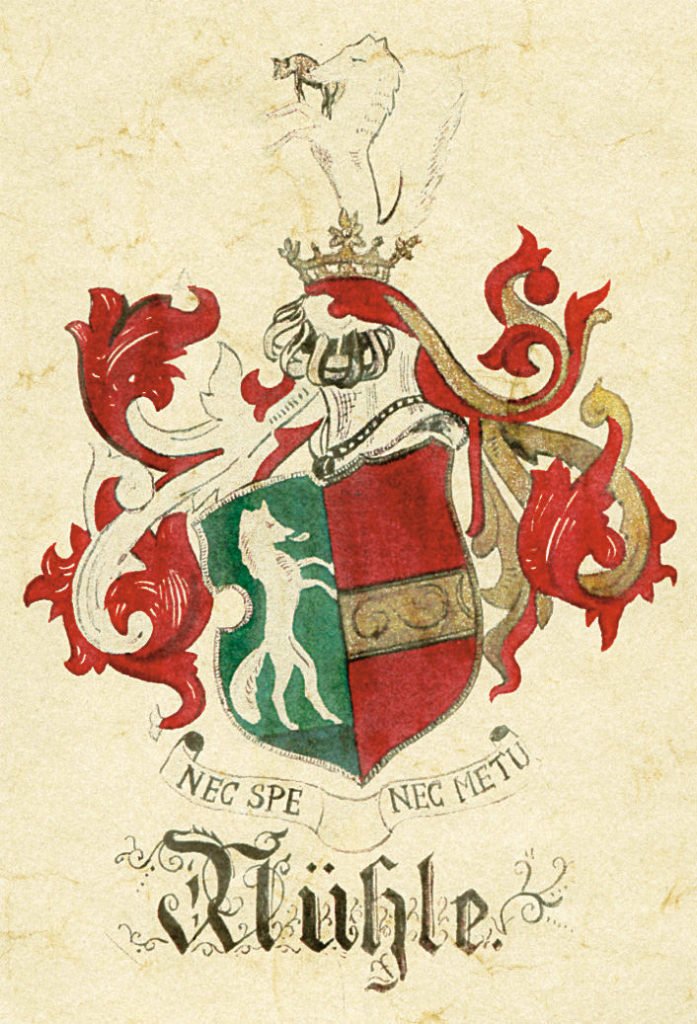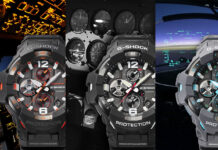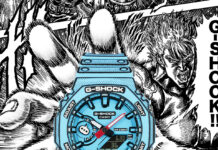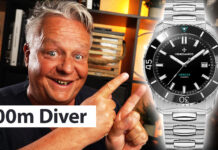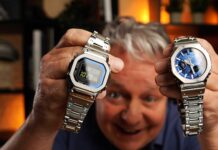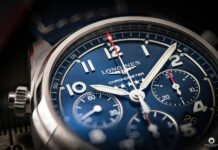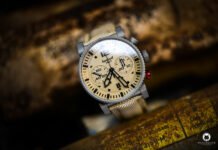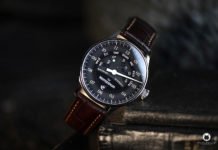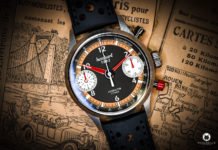Auch verfügbar auf Deutsch
The renowned watch manufacturer Mühle is one of the famous Glashütte manufactories. The timepieces stand for functionality and exude a certain maritime charm. Behind the watch company is an eventful history. Everything about Mühle-Glashütte, here in portrait!
From manufacturer of precise measuring instruments to nautical instruments to watch manufacturer: a portrait of Mühle-Glashütte
Today, Mühle is known worldwide for its renowned models. For example the S.A.R. Rescue Timer, an emergency watch, which was developed in cooperation with the German Society for the Rescue of Castaways. Or the Teutonia model family, which stands for elegant watches for everyday use. Names that are familiar to most watch connoisseurs and enthusiasts. The history of the Mühle-Glashütte manufactory, which is the only one of the Glashütte watch companies that is still family-owned, takes us back almost 150 years into the past.
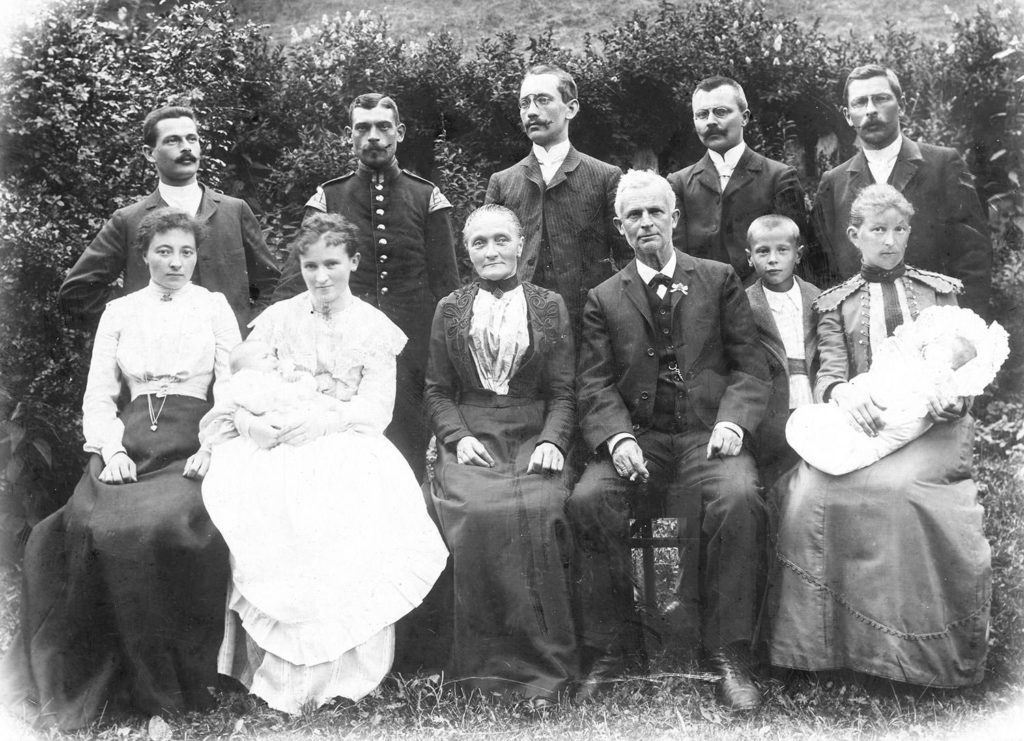
1869: It all begins with a young precision mechanic
For more than 700 years, the Mühle family has been based in the Eastern Erzgebirge mountains, where the small town of Glashütte is located. Here, the family is now in its fifth generation of working in the watch industry in Glashütte. It all begins with the founding of the family business in 1869 by Robert Mühle. The founder was born as George Albert Mühle in 1841 in Lauenstein near Glashütte. He only took the name Robert when his first wife and their son Robert died. As a young man, he successfully completed an apprenticeship as a precision mechanic. Already at this time his talent in this field gets visible. While still working as an employee, he sets up his own precision mechanics workshop, “Robert Mühle Glashütte,” initially specializing in the manufacture of very precise measuring instruments for the other Glashütte watchmaking companies. “Robert Mühle Glashütte i. Sa. recommends its finely crafted measuring tools according to the metric system,” you can read on the first advertisements.
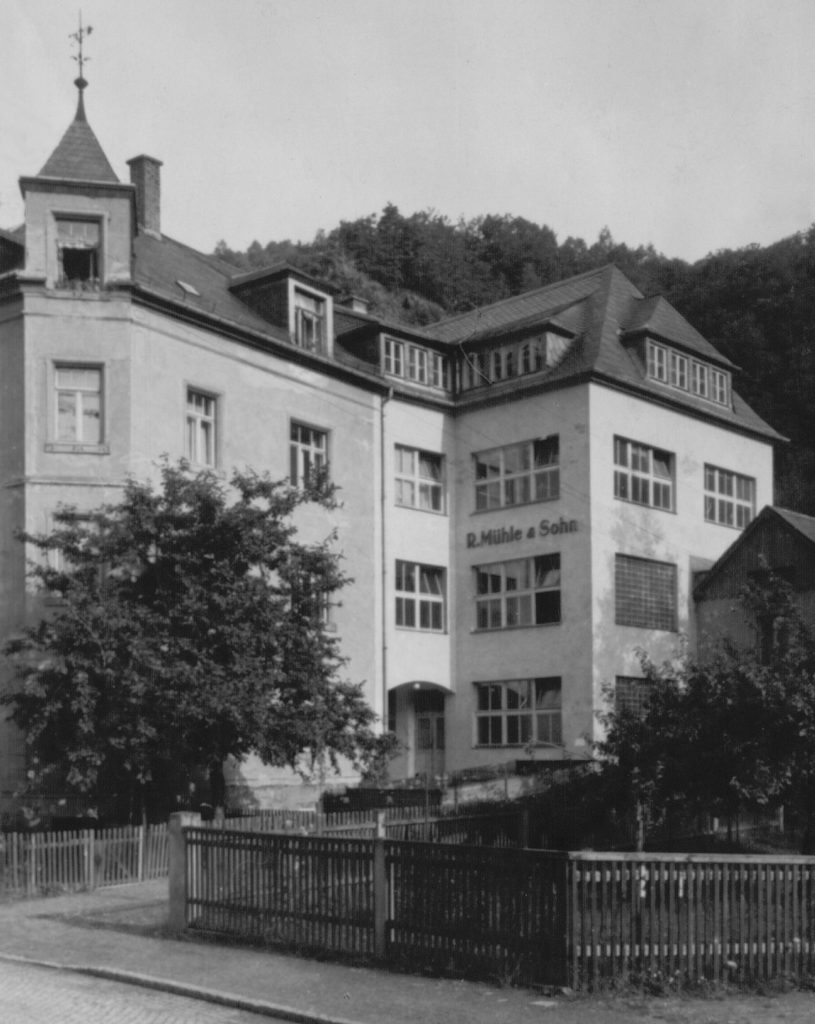
A fine business sense and good quality pay off. Soon, Robert Mühle is getting recognized with his small company and expands the range to include speedometers, tachometers, and other measuring instruments that were important at the time during the emerging industrialization. His skills were rewarded. Awards were not long in coming. In 1896, for example, the city of Dresden presented him with the gold medal “for his measuring instruments” at an exhibition of craftsmanship. Mechanical wristwatches, which today form the core of the Mühle brand, are not yet an issue at this time.
1900: Golden times for Mühle-Glashütte
From 1900 onwards, golden times dawn for the Mühle family and their company. Robert Mühle has established a unique selling proposition in the region and far beyond its borders with his production of measuring instruments. At that time, Mühle also produced the very first dial gauges. According to the company, these achieved an unprecedented level of accuracy for the time. Robert Mühle managed to produce watches that measure to within a thousandth of a millimeter. It should be kept in mind that the machines and measuring instruments at this time were not yet familiar with electronics.
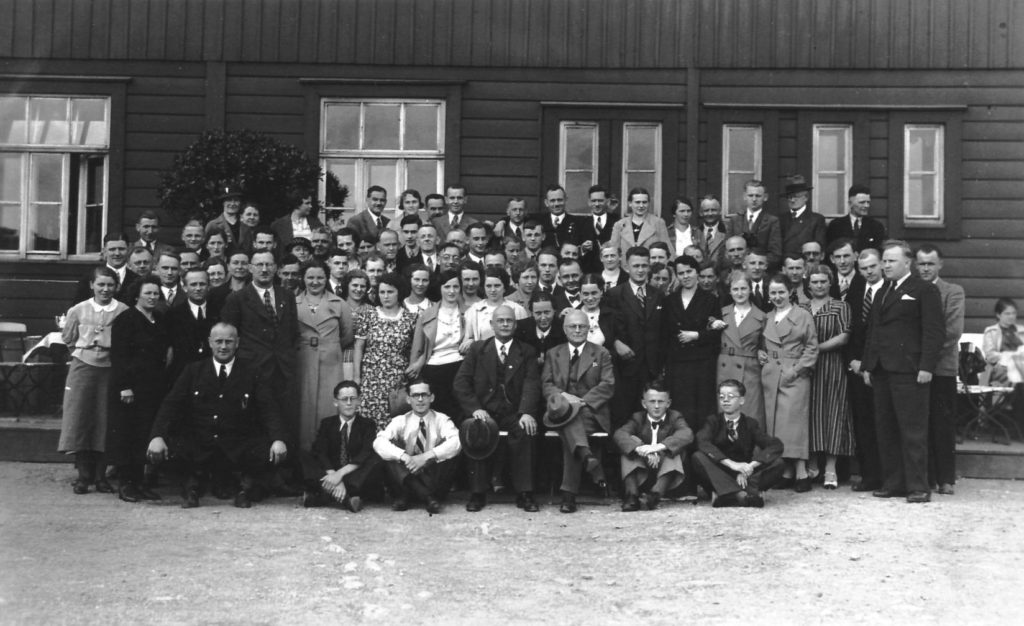
At the turn of the century, the next generation takes the reins at Mühle-Glashütte. Robert’s sons Paul, Alfred and Max join the company, which subsequently changes its name from “Robert Mühle Glashütte i. Sa.” to “Robert Mühle und Sohn”. It is also this generation that for the first time directs the company’s focus to watches, albeit in a rather unusual way.
1918: Mühle-Glashütte produces the first real watch
1918 is another important date in the company’s history. The triumphant advance of the automobile certainly picks up speed. After the First World War, more and more Germans buy the new means of transportation. Mühle plays no unimportant role in its spread. The family business equips German car brands with measuring instruments such as speedometers and tachometers – and also with the first car watches. The clients are like a Who’s Who of the automotive industry at the time. Brands such as Maybach, Horch (today Audi) and BMW equipped their vehicles with Mühle gauges. BMW in particular installed speedometers from Mühle’s Glashütte workshop in its motorcycles. The first real watch that Mühle ever built was therefore a car watch.

At the beginning of the 1920s, more and more tachometers from Mühle bear the addition “Vereinigte Werke Glashütte/Sa.” The new decade brings a strategic alliance with other companies in the region to form an open trading company. However, the pact does not last too long. Eventually, the measuring instruments again bear only the logo of the time, the characteristic Mühle.
The fact that Mühle also serves other industries, such as the automotive market, in addition to the local Glashütte watch manufacturers, proves to be a real stroke of luck at the latest after the world economic crisis in 1930 – or was it entrepreneurial foresight? Because while less broad-based competitors in the region have to close down, the corporate model of Robert Mühle and Son is built on a secure foundation. The company also adds tachometers for trucks or the military to its product range.
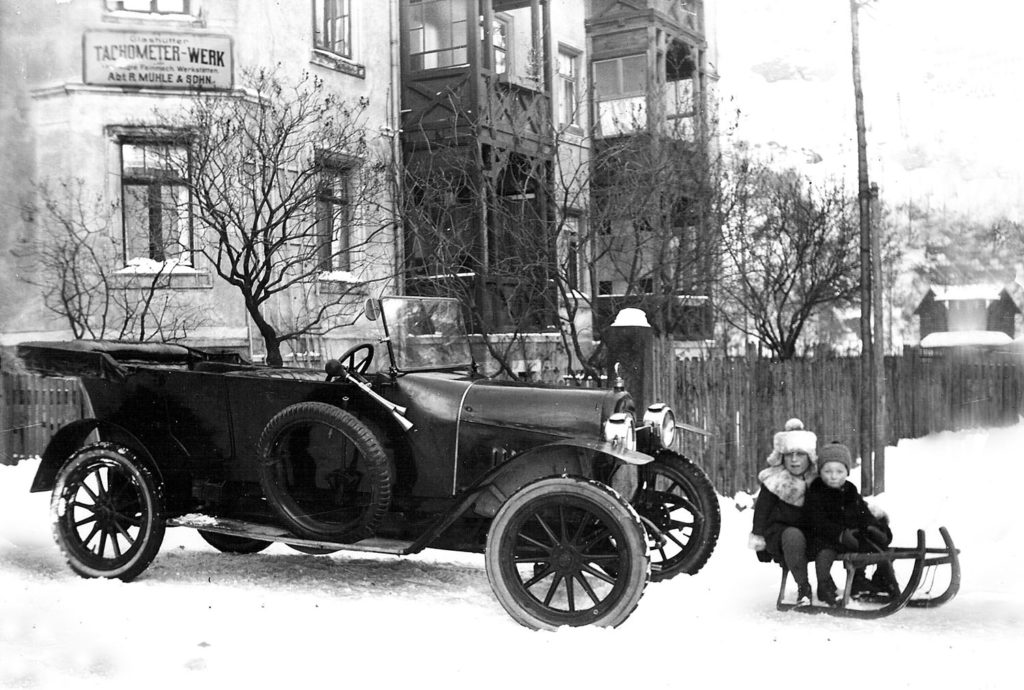
1930: The “nautical genes” arrive at Mühle-Glashütte
In the 1930s, Mühle’s “nautical genes” also appear for the first time, making the brand today the most maritime of the Glashütte watch manufacturers. This is due to the fact that Hans Mühle, who recently joined the company, no longer only installs the measuring instruments in vehicles, but also in ships and yachts. Hans Mühle is a grandson of the company founder Robert Mühle. His passion for the maritime industry was practically born in his cradle. After all, his mother Elisabeth was born Stübner and thus came from a family that specialized in the manufacture of chronographs for timing beacons.
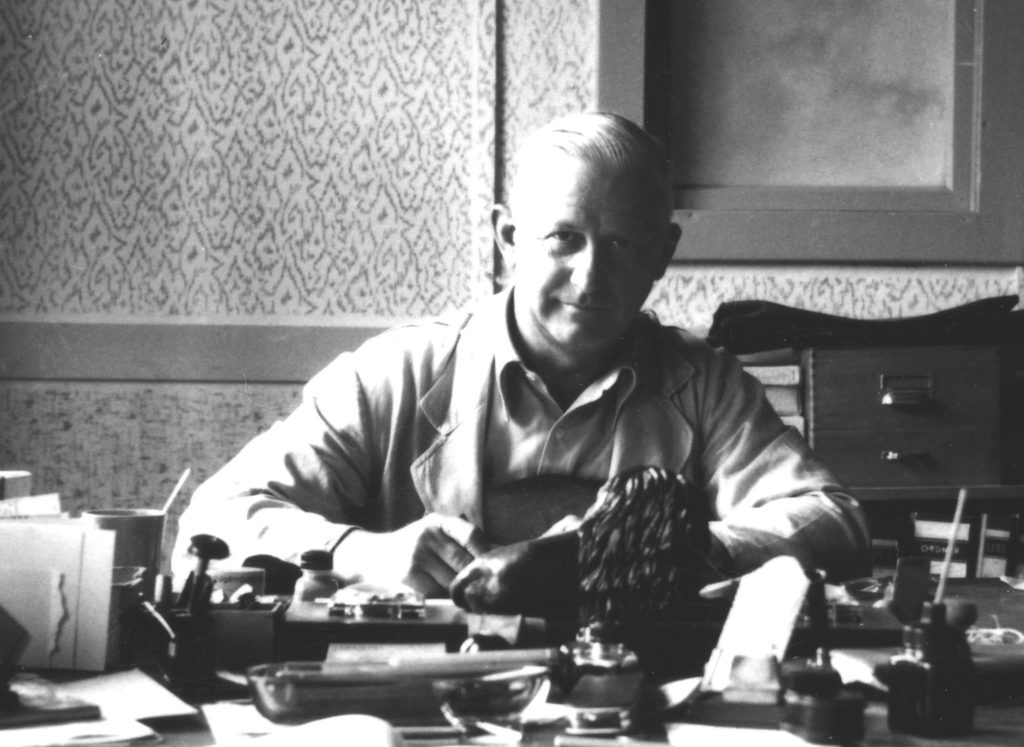
After 1945: setbacks and a new beginning
The family-run company seems to be riding a wave of success. But Mühle-Glashütte, too, has to contend with setbacks in order to grow from them. Disaster strikes with the Second World War. It culminates with a bombardment by the Russian air force over the Eastern Erzgebirge and Glashütte. But that is not all: what is not destroyed by the bombing or burned in the firestorm is dismantled by the occupying forces and expropriated by the Soviet Union. The reason: as a manufacturer of measuring instruments for the Wehrmacht, among others, Mühle is found guilty. Just 20 percent of the production equipment and machines remain in Glashütte and are now managed under the name “Messtechnik Glashütte”.
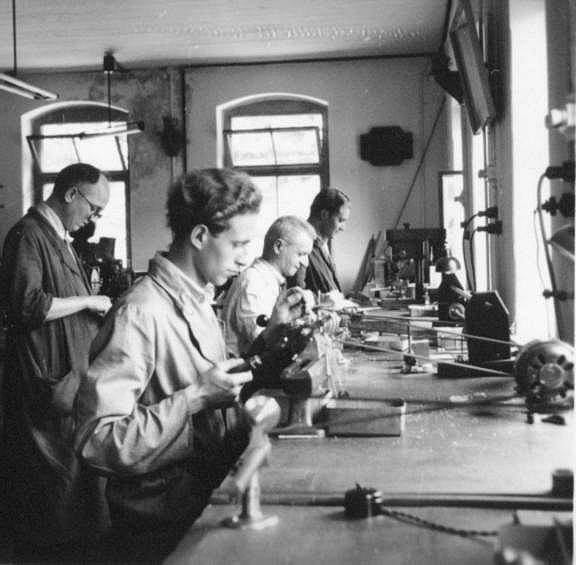
It is a heavy blow for the Mühle family. 1945 is like a turning point. The company, which is just celebrating its 75th anniversary, is down in the dumps. Hans Mühle does not give up, but fights on – for his family’s company, which he now runs in the third generation. In December, he re-establishes the company. The name is “Ing. Hans Mühle”. What remains, despite the war and its destruction, is knowledge. Hans Mühle soon rebuilds the company: as a reliable company in the production of measuring instruments. What is new are the areas and industries for which Hans Mühle manufactures. Now Mühle develops everything from pressure and temperature gauges to barrel and escapement movements for the photographic and cinema industries – everything that post-war Germany needed most. And with success. The workforce is able to expand Mühle from three at the new start to over sixty a few years later. Once again, Mühle’s success lies in the company’s changeability, which runs like a thread through the history of the Glashütte company. While in the 1920s it was cars for which measuring instruments were built, now it is even cinemas whose demand sets Mühle’s renewed triumphant advance in motion.
1972: Expropriation by the GDR
But even the renewed upswing after the Second World War was short-lived. At the beginning of the 1970s, two more strokes of fate follow for the resurrected traditional company. First, the new founder Hans Mühle died in 1970 and the reins were taken over by his son Hans-Jürgen Mühle. Born in 1941, Hans-Jürgen was well prepared from a young age to steer the company’s fortunes after his father’s retirement. He studied precision mechanics and optics in Jena, and later gained his first practical experience working for one of his father’s suppliers. This means that the fourth generation is taking the helm at Mühle-Glashütte
Shortly thereafter, however, the company also felt the harsh effects of socialism. In 1972, the company was forcibly nationalized. This was the second expropriation in the 100-year history of Mühle. The name of the company is now “VEB Feinmechanik Glashütte”. More than 100 years of monopoly in the manufacture of measuring instruments and control technology are now history. From one day to the next, everything changes abruptly for Hans-Jürgen Mühle. Yesterday, he was the owner of his own family business, but today he has to apply for a management position in his former company just like anyone else. At least he will remain plant manager of the newly appointed “VEB Feinmechanik Glashütte” for the next eight years. However, when it comes to evaluating the company together with its production goods, only finished products are still part of the inventory. The expansion of the workshop, which was in the planning stage at this time, is cancelled.
1980: Hans Jürgen Mühles years as sales manager
In 1980, the company finally comes to an end. Mühle, or rather the “Volkseigene Betrieb Feinmechanik Glashütte”, loses its last independence. During the restructuring by the GDR, Hans-Jürgen Mühle’s former company now became part of VEB Glashütter Uhrenbetriebe (usually abbreviated to GUB). In the end, nothing more than a division of a state-owned enterprise remained of the once proudly traditional company. At GUB, Mühle has to make do with a job in the sales department, but later rises to the position of sales manager. His responsibilities as sales manager now include the sale of wristwatches, chronometers and marine watches, most of which are powered by quartz movements. Sales are made worldwide, but mainly in the other Eastern European satellite states of the Soviet Union. A change of circumstances is only set in motion by a political event of the century, the Wende.
1990: Reunification brings a new beginning
For many people, 1990 was the most drastic year of their lives. This is perhaps also true for Hans-Jürgen Mühle. After reunification, he and five other managing directors played a key role in transforming Glashütte Uhrenbetriebe into a market-based company. Actually, he could have stayed in this secure and comfortable position. Mühle, however, leaves the company. His passion for the family-owned company, which had become known for generations for milestones in measurement technology and which he finally had to bury himself in the fourth generation, was too great.
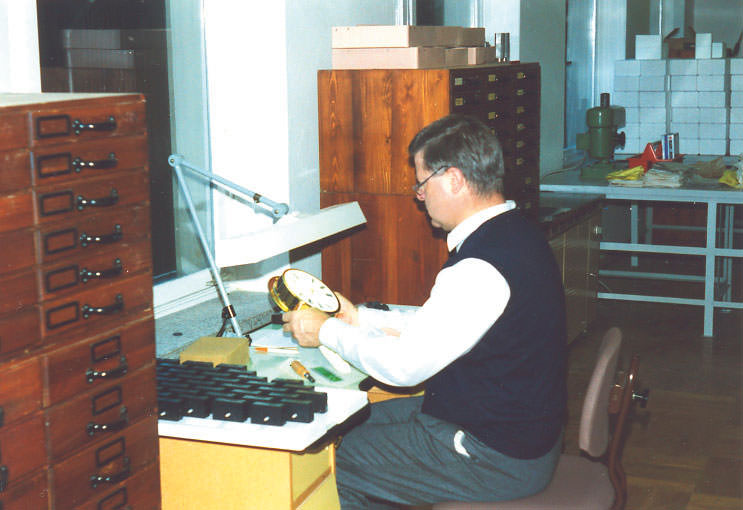
In 1994, the time has come. Hans-Jürgen Mühle follows in his father’s footsteps and does the same. He re-founds the family business for the second time. “Mühle-Glashütte GmbH nautical instruments and precision mechanics” is the name by which we still know the company today. Two employees are on board. At the beginning, as in GDR times, the portfolio of the revived Mühle GmbH includes marine chronometers and ship’s watches. This should secure the survival of the still young company for the time.
Like his father, Hans-Jürgen Mühle did not have to start from scratch. While his father’s knowledge enabled him to rise quickly after the Second World War, it is now his good contacts that help his son achieve his first successes. His travels in the field as sales manager of GUB have now enabled him to draw on a dense network of potential partners and customers.
1995: Mühle builds its first wristwatch
In 1995 comes the decisive step that has made the company what we know today. A shipyard asked Mühle if the company could also manufacture and supply water-resistant wristwatches as part of the ship’s equipment. Finished wristwatches are a first in Mühle’s history. Previously, the company had only worked as a subcontractor for the long-established Glashütte workshops, and manufactured measuring instruments and tachometers. But a real wristwatch? Why not? Hans-Jürgen Mühle finally agreed. Mühle’s first two wristwatches, which are available for free sale, are sporty diving watches for men. High-precision wristwatches, fully designed for functionality and with a certain maritime reference. Mühle seems to have found the perfect product, combining all the divisions and qualities that have distinguished the company so far. How little the very first Mühle wristwatch was intended for leisure use is evident from its name. It simply has none – simply intended as a piece of marine equipment that performs a function, but without any lifestyle thought.
From 1995: Diver and aviator models bring the first successes
The sporty divers’ watches are still an integral part of the Mühle range today. Probably the best-known model among them is the S.A.R. Rescue Timer, which was developed in cooperation with the German Maritime Search and Rescue Service (DGzRS). The first 56 watches were handed over to the DGzRS in 2002. They have been in endurance testing ever since and are still working – an impressive demonstration of the longevity and robustness of Mühle watches.
The first success with the masses was achieved by the pilot watches from Mühle-Glashütte. The Marine-Fliegeruhr 1 enjoys great popularity among customers. Mühle thus makes a name for itself for the first time outside the specialist world. At the beginning, the company produces about 9000 watches per year – with increasing success. The sale of these “leisure watches” becomes increasingly important for the company in the years to come. What also plays into the company’s cards: the mechanical wristwatch celebrates its comeback around the same time. More and more people are appreciating the fine art of watchmaking again and want to wear style-conscious, handmade timepieces. Whether as a status symbol, as an expression of their style, or because of their fascination with technology.
The new millennium: the 5th generation takes over at Mühle-Glashütte
In 2000, the now fifth generation of the Mühle family is introduced to the venerable company. But first, Thilo, born in 1968, like all his ancestors, has to prove that he has what it takes to lead the company in the future. There are no advance praises. Like his father and grandfather, he starts out in production and learns what is important in the manufacture of high-precision watches and measuring instruments. In 2004, he took the next step by joining the company management. Since 2007, he has led Mühle-Glashütte GmbH nautical instruments and precision mechanics as his father’s successor.
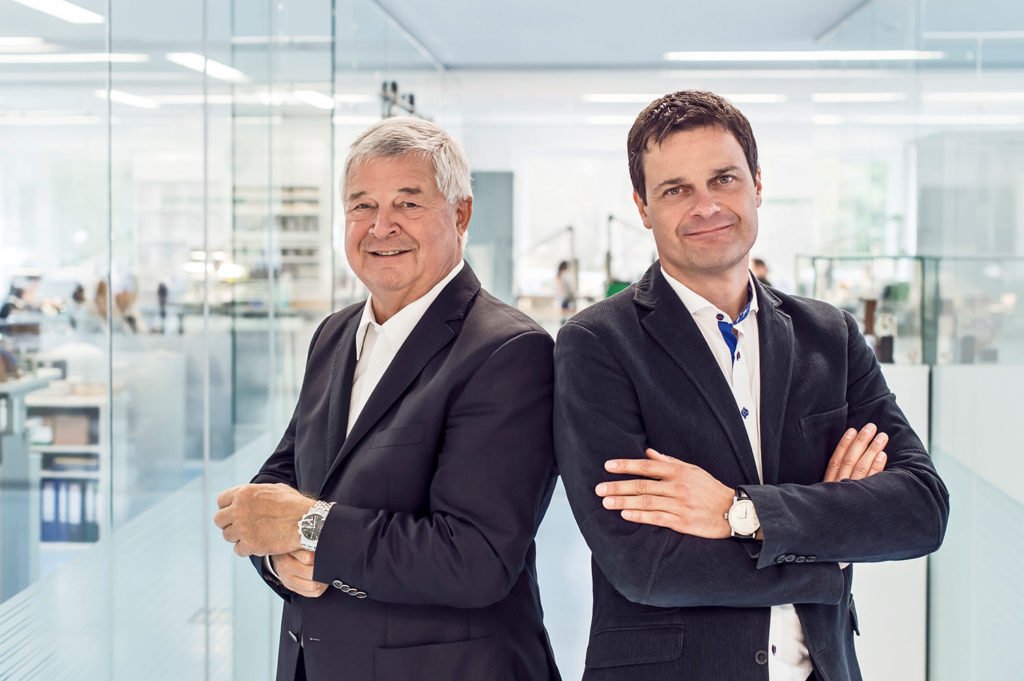
Mühle-Glashütte: an innovative pioneer in modern technology
A lot has happened since the 1990s. It is remarkable that Mühle, unlike many other manufacturers, does not just live off its own heritage and reissue old collector’s items, but permanently looks to the future. This is made visible by the abundance of patent applications that have been filed with the patent office since then. The best known of these is undoubtedly the woodpecker neck regulation, which is universally appreciated in the industry and is an important unique selling point. It was introduced in 2003. The woodpecker neck regulator is a further development of the typical Glashütte swan neck fine regulator used until then, and owes its name to its shape. It resembles the head of the bird that gives it its name. The idea behind this device is that the swan-neck regulator makes Mühle watches particularly resistant to shocks or impacts. It also regulates the movement.
The specially developed three-quarter plate, which is used in the manufacturer’s chronograph movements, has also become an essential component of Mühle wristwatches. It was introduced in 2008.
2011: Mühle-Glashütte officially advances to a manufactory
Since 2011, Mühle-Glashütte has been allowed to officially call itself a manufactory. The term manufactory is protected in Germany and requires that the watch company designs its own movements and does not buy calibers from other manufacturers. Mühle’s first self-designed movement is a hand-wound movement and bears the name MU 9411. It was first used in the Teutonia III hand-wound movement. Mühle’s most important in-house creations among the movements bear the name abbreviation RMK in memory of the company’s founder Robert Mühle. Up to 80 percent of all components for the calibers are designed by Mühle himself and are made in the Osterzgebirge region around Glashütte.
The product range: from noble business watches to sporty divers
The RMK 01 and its further developments are used in the newly created manufactory line “R. Mühle & Sohn” since 2014, which was introduced on the occasion of the company’s 145th anniversary. In addition to this manufactory line, there are several model lines in the range, each with different specifications. All lines and models are united by the precision and functionality typical of Mühle. The spectrum ranges from stylish business watches like the Teutonia II Kleine Sekunde, the 29er Casual or Lunova Chronograph to functional sports divers like the Sebataillon GMT or the S.A.R. Rescue Timer, which are almost more nautical instrument than wristwatch. When it comes to movements, a comfortable automatic movement is usually used.
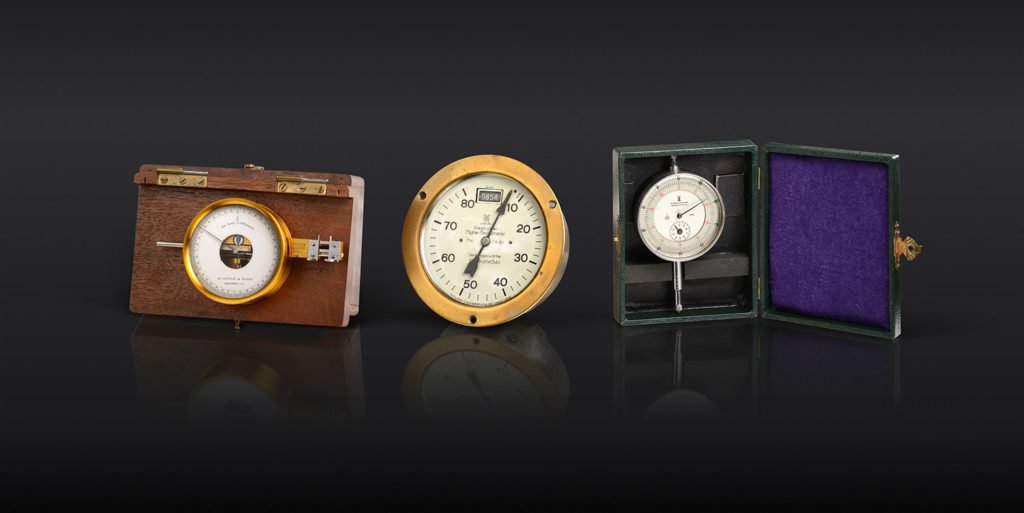
Mühle-Glashütte – an eventful history
Stories behind a watch brand are often very interesting. They reveal how watch manufacturers have become what they are today. They tell which happy coincidences or hard setbacks have shaped the company. And they are also always stories about people who sacrificed everything for their brand with a great deal of passion and an iron will – so that today we can enjoy the watch we wear on our wrist. One such story is that of the Mühle family and their company, Nautische Instrumente Mühle-Glashütte.
